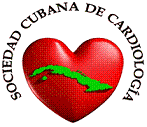Presentaciones electrocardiográficas atípicas en pacientes con síntomas isquémicos, tiempo de cambiar la estrategia.
Palabras clave:
SCASEST, de Winter, WellensResumen
Existen una serie de alteraciones electrocardiográficas atípicas que se han descritos recientemente, y que tienen la importancia de indicar un riesgo elevado de presentar un infarto del miocardio o, también conocidos como "equivalentes de síndrome coronario agudo con elevación del segmento ST (SCACEST)”. Entre ellos se encuentran el infarto del miocardio aislado de cara posterior, el síndrome de Wellens, el patrón de Winter, la elevación del segmento ST en aVR, los criterios de Sgarbossa para el bloqueo completo de rama izquierda o marcapasos y las ondas T hiperagudas. Estos deben ser conocidos y reconocidos por los emergencistas, ya que la clínica junto con la detección temprana de los mismos agiliza el tratamiento definitivo del mismo. Describimos tres casos que han sido diagnosticados en los servicios de urgencias y tras el reconocimiento del mismo se agilizó la activación del servicio de hemodinámica .
Descargas
Citas
Bachour F, Asinger R. Activating Primary Percutaneous Coronary Intervention for STEMI That Is Not: The Collateral Damage of Improving Door-to-Balloon Time: Comment on “Prevalence and Factors Associated With False-Positive ST-Segment Elevation Myocardial Infarction Diagnoses at Primary Percutaneous Coronary Intervention–Capable Centers”. Archives of internal medicine. 2012 Jun 11;172(11):871-.2
Chung SL, Lei MH, Chen CC, Hsu YC, Yang CC. Characteristics and prognosis in patients with false-positive ST-elevation myocardial infarction in the ED. The American journal of emergency medicine. 2013 May 31;31(5):825-9.
McCabe JM, Armstrong EJ, Kulkarni A, Hoffmayer KS, Bhave PD, Garg S, Patel A, MacGregor JS, Hsue P, Stein JC, Kinlay S. Prevalence and factors associated with false-positive ST-segment elevation myocardial infarction diagnoses at primary percutaneous coronary intervention–capable centers: a report from the Activate-SF registry. Archives of internal medicine. 2012 Jun 11;172(11):864-71.
Macfarlane PW, Browne D, Devine B, Clark E, Miller E, Seyal J, Hampton D. Modification of ACC/ESC criteria for acute myocardial infarction. Journal of electrocardiology. 2004 Oct 31;37:98-103.
Wagner GS, Macfarlane P, Wellens H, Josephson M, Gorgels A, Mirvis DM, Pahlm O, Surawicz B, Kligfield P, Childers R, Gettes LS. AHA/ACCF/HRS recommendations for the standardization and interpretation of the electrocardiogram. Circulation. 2009 Mar 17;119(10):e262-70.
De Zwaan C, Bär FW, Wellens HJ. Characteristic electrocardiographic pattern indicating a critical stenosis high in left anterior descending coronary artery in patients admitted because of impending myocardial infarction. American heart journal. 1982 Apr 1;103(4):730-6.
de Zwaan C, Bär FW, Janssen JH, Cheriex EC, Dassen WR, Brugada P, Penn OC, Wellens HJ. Angiographic and clinical characteristics of patients with unstable angina showing an ECG pattern indicating critical narrowing of the proximal LAD coronary artery. American heart journal. 1989 Mar 1;117(3):657-65.
Haines DE, Raabe DS, Gundel WD. Anatomic and prognostic significance of new T-wave inversion in unstable angina. The American journal of cardiology. 1983 Jul 1;52(1):14-8.
Mao L, Jian C, Wei W, Tianmin L, Changzhi L, Dan H. For physicians: Never forget the specific ECG T-wave changes of Wellens' syndrome. International journal of cardiology. 2013 Jul 15;167(1):e20-1.
Mead NE, O'Keefe KP. Wellen's syndrome: An ominous EKG pattern. Journal of emergencies, trauma, and shock. 2009 Sep 1;2(3):206.
de Winter RJ, Verouden NJ, Wellens HJ, Wilde AA. A new ECG sign of proximal LAD occlusion. New England Journal of Medicine. 2008 Nov 6;359(19):2071-3.
Baek JY, Seo SM, Park HJ, Kim PJ, Park MW, Koh YS, Chang KY, Jeong MH, Park SJ, Seung KB. Clinical outcomes and predictors of unprotected left main stem culprit lesions in patients with acute ST segment elevation myocardial infarction. Catheterization and Cardiovascular Interventions. 2014 Jun 1;83(7):E243-50. 13.
Smith SW. Updates on the electrocardiogram in acute coronary syndromes. Current Emergency and Hospital Medicine Reports. 2013 Mar 1;1(1):43-52.
Rokos IC, French WJ, Mattu A, et al. Appropriate cardiac cath lab activation: optimizing electrocardiogram interpretation and clinical decision-making for acute ST-elevation myocardial infarction. Am Heart J 2010;160(6):995–1003, 1003.e1–8.
Publicado
Cómo citar
Número
Sección
Licencia
Aquellos autores/as que tengan publicaciones con esta revista, aceptan los términos siguientes:- Los autores/as conservarán sus derechos de autor y garantizarán a la revista el derecho de primera publicación de su obra, el cuál estará simultáneamente sujeto a la Attribution-NonCommercial 4.0 Internacional (CC BY-NC 4.0) que permite a terceros compartir la obra siempre que se indique su autor y su primera publicación esta revista. o admite fines comerciales. Permite copiar, distribuir e incluir el artículo en un trabajo colectivo (por ejemplo, una antología), siempre y cuando no exista una finalidad comercial, no se altere ni modifique el artículo y se cite apropiadamente el trabajo original. El Comité Editorial se reserva el derecho de introducir modificaciones de estilo y/o acotar los textos que lo precisen, comprometiéndose a respectar el contenido original.
- Los autores/as podrán adoptar otros acuerdos de licencia no exclusiva de distribución de la versión de la obra publicada (p. ej.: depositarla en un archivo telemático institucional o publicarla en un volumen monográfico) siempre que se indique la publicación inicial en esta revista.
- Se permite y recomienda a los autores/as difundir su obra a través de Internet (p. ej.: en archivos telemáticos institucionales o en su página web) antes y durante el proceso de envío, lo cual puede producir intercambios interesantes y aumentar las citas de la obra publicada. (Véase El efecto del acceso abierto).









